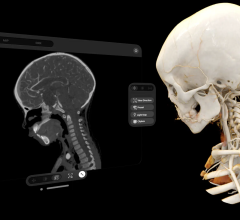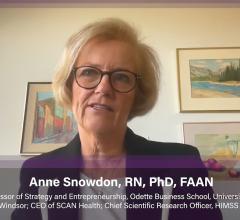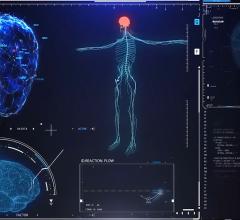
Rainer Dronzek, assistant vice president with Automation Associates, a division of TranSystems Corp.
DAIC: What are some of the scenarios — decisions or investments — in which a hospital might want to
consider doing a simulation model first?
Rainer Dronzek: It can really span from upfront in the facility design to when they are actually designing the processes that go into the facility — then there is the actual operational aspect. In many cases we get called because there is a bottleneck or a specific problem to solve.
The first thing would be in the design stage of a new facility — how big do I need to make the box? Then you’ll need to figure out the best way to operationalize staff and patient processes, or it could also be equipment — making sure that you have enough capacity to handle a certain volume.
Whether it’s a process change or facility renovation, you can use the model to predict the impact of a change. If you have $100,000, what is the best thing to do with it? Do you do a facility modification, do you buy some new equipment, do you do something with staff, or if you’re affecting all three of those areas, what would be the mix for allocating the funding? The simulation will help quantify what that predicted outcome will be.
DAIC: Under what circumstances would you not
recommend doing a simulation?
RD: One of the things with simulations, just the technology in general, is that it requires a repeatable process. We can't model chaos. Our challenge within healthcare is to make sure that we are being honest with the customer and saying, “You may not need a simulation right now — you might just need a little bit of housekeeping to get your processes in order, and once you do that we can come back and use the model as a better analysis tool.”
DAIC: How does the simulation company gather the data it needs to create a truly plausible, credible model of big process or facility change?
RD: I categorize our data collection into five different areas. First, we can pull data off of information systems, especially when hospitals have a very mature IT framework.
Then we do interviews to both understand what the process is and to understand how long it takes to do things.
Third, we use chart reviews. If the IT systems are not collecting a certain data set, it may be recorded manually someplace, whether it is a patient chart or a log that a technologist might be keeping separately. So we can look through that and get information.
Fourth, we'll do an observation study, which means we’re looking at and being immersed in the process we’re modeling to understand how things are working, and validating that process. In many cases, we can see things that they are too close to see just by standing over in a corner for a couple hours and watching how the operations work.
The fifth method is short-term data collection strategies. We may need to put a log book or chart of some type in place for a few weeks that somebody fills out every time they do an exam or clean a piece of equipment or whatever the task might be. That can give us the type of data we need to drive the model.
DAIC: What should the
hospital administration or department head be
prepared to provide to the simulation consultants at the beginning of the process?
RD: First, it is nice when the hospital can provide either a single person or a team that is the point person for the gathering of the data. If you look at the five different areas that we draw from, it really spans many different portions of the hospital. We'll work with the IT department, the cath lab — its staff and management. It helps when somebody inside the hospital plays the role of facilitator.
It’s up to the hospital how much time they want to spend versus off-loading that responsibility to whomever is coming in to do the simulation study. If the hospital decides to collect all the data, they don't get the benefit of the outside view and the guidance that the simulationist could provide. By the same token, if you just throw somebody into a hospital and say, “Go get the data,” they’re going to spend a lot of time trying to figure out where it is and who are the right people to talk to.
DAIC: How far in advance should the hospital bring in a simulation consulting company?
RD: I would say that 75 percent of the time when we have completed a successful project and the customer has embraced the technology, they'll say, “I wish I would have had you earlier when we first started looking at the process,” or whatever the case might be. I guess the underlying guideline is: Begin as early as possible.
When you are talking about a consultant, they would appreciate coming in earlier and it may even be from a sales level. Just have somebody come in and give you a sales pitch on what they can do for you today versus what they can do for you six months from now when the wheels are already in motion.
DAIC: Simulation modeling really started getting recognized in healthcare as a valuable tool in the mid ‘90s — what helped propel the technology in this industry?
RD: As soon as we started going to laptops and the applications began providing animation, I think there was a quantum leap in the interest and understanding of what the technology does. Probably in the late ‘90s is where we really saw a lot of momentum.
You really don't need to have animation to conduct the simulation study, but what we find is that it is so useful not only in validating the model, but getting the idea across of what the simulation actually is doing. I think animation is very beneficial within the healthcare industry, and that may have been one of the reasons we saw this increased awareness of what simulation is — we were able to show them, in an animated fashion, what the simulations are doing.
Along with that, the introduction of better applications running on faster machines and taking less time to build models were probably a big factor as well.


 May 01, 2024
May 01, 2024 








